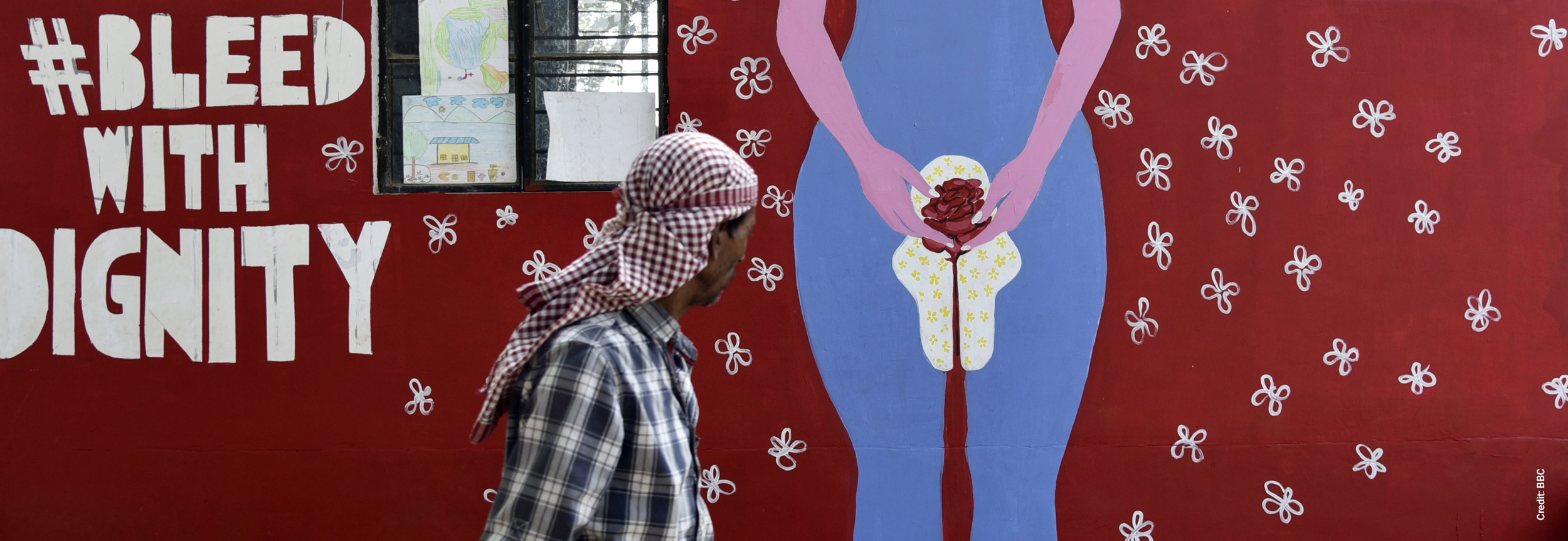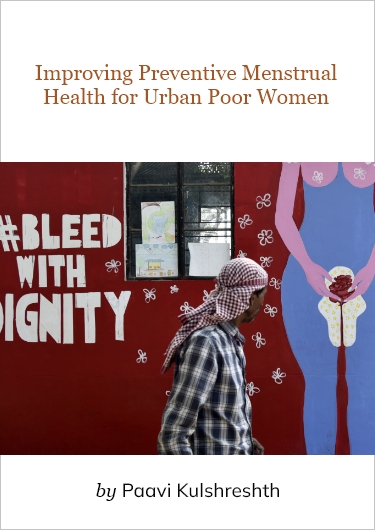Menstrual health is among the hardest to resolve health challenges in India. Besides access and affordability, menstrual health challenges come with significant social stigma. In recent years, there has been a celebrated increase in the number of girls being enrolled in schools. At the secondary level, GER for girls is 80.97%, compared to 79.16% for boys (2015-16). The high enrolment rate, however, veils a dire estimate. Nearly 60% of girls drop out of schools by the time they reach senior secondary. In many cases, this trend can be largely attributed to menarche. Studies also suggest that an earlier onset of menstruation can prepone school dropouts. A graver concern, however, is lack of awareness. Only 36% of women in India use menstrual hygiene products, less than 18% use sanitary napkins. 70% mothers perceive menstruation as ‘dirty’, and 71% girls have no idea about what a period is until they get theirs (2015). 77% women (88% according to one estimate) use an old cloth, ashes, newspapers, husk, wood shavings, dried leaves, plastic, etc. in place of menstrual hygiene products. These methods make women more susceptible to UTIs, Hepatitis B, and cervical cancer.
While menstrual health concerns manifest more deeply in rural India, the problem is fairly concerning in urban spaces as well. A comparative study, with a sample of 500 girls from a school in Rajpur Sonarpur municipality in West Bengal, indicated that 64% girls used sanitary pads. The remaining relied on reusable cloth pads. 52% of urban schoolgirls fell under the ‘unsatisfactory’ category when measured for ‘cleaning external genitalia’ (n = 500) – a mere 10% increment compared to the rural estimate (n = 490).
While the association of shame with menstruation (not limited to urban poor women) adds to plausible affordability challenges, access is no problem at all. Urban markets are lousy with menstrual hygiene products. Oligopolists like P&G and Johnson & Johnson offer affordable varieties that sell for Rs 28-30 per 7 pads. It is advisable to change the pad every 4 to 6 hours, and menstruation is expected to last anywhere between 2 and 7 days. Let us now indulge in some best-case scenario math. A woman, whose menstrual cycle lasts no more than 2 days, changes her pad every 6 hours. She would still require 8 pads. This is keeping aside considerations of menstrual flow and length of cycle. Therefore, costs are likely to rise and differ from woman to woman. Further, the above scenario assumes that women are changing their pads every 6 hours. This may not hold true for urban women, especially due to lack of access to proper sanitation facilities, both in places of work and residence. Despite the undeniable merit of increasing information w.r.t menstrual hygiene, best practices are likely to amp up costs. Prioritisation of such increased costs may not appear desirable to many urban poor women, especially to those with a hand-to-mouth existence.
Circulated by regional manufacturers, fluff pads that cost Rs. 2-3 per pad (colloquially known as cotton pads; not made with cotton) present a reasonable alternative. However, it is important to note that this is a recurring cost and fewer alternatives often encourage the sustenance of higher prices. Reusable alternatives like menstrual cups have higher up-front costs and are limited to a more niche, largely online market in India. Reusable markets are yet to become accessible and affordable for urban poor women.
While tedious challenges remain, 90% of menstrual health problems are preventable if detected early. A root cause analysis, under a market systems approach, could then be narrowed down to the following:
- Affordability and lack of prioritisation: household expenditure is not gender-responsive in urban poor household, therefore, menstrual hygiene products often get left out of priority expenditure lists.
- Lack of information and stigma: lack of prioritisation is also closely related to lack of information when it comes to menstrual hygiene and health. As discussed previously, social stigma sustains lower demand for information.
- Supply shortage of affordable pads: with a nearly five-fold increase in demand for government-supplied Suvidha pads, sold at Rs 1/pad, Jan Aushadhi Kendras are running out of supply – a classic problem concerning economies of scale. For large scale manufacturing and circulation, well-established private players must step in. It is the most cost-effective and arguably the only way to meet demand.
A community-driven approach to promotive and preventive menstrual health coupled with a market-driven solution could potentially save the day. Community menstrual hygiene promoters (urban poor women belonging to SHGs or urban unorganised settlements, et al), in partnership with or educated by third-party facilitators (menstrual health NGOs, et al), can work towards reducing information asymmetry and normalising conversations around menstruation. This could also involve promotion of savings behaviours that make prioritisation of menstrual hygiene products easier. Involvement of third-party facilitators could also improve information about and access to reusable menstrual hygiene products. Savings behaviours would then allow urban poor women to save up for more expensive, long-lasting reusables products like menstrual cups and reusable cloth pads (standard up-front cost: Rs 250/cup and Rs 200/pad). While increased information is likely to increase demand, hence, incentivising private markets to cater to urban poor women, there is also scope for people-private-partnerships. A partnership between community promoters and private firms, where private firms act as lenders, community promoters as borrowers, and urban poor women as savers/consumers, can yield desirable results. Firms can offer their menstrual hygiene products as loans to community promoters that then sell within their designated areas to urban poor women. Firms receive payments for units sold. Such a model, however, assumes an increase in demand with increase in information and is aided by savings behaviours (it does not create lower than usual prices). This model would not only improve information and normalise conversations around menstruation but would also produce entrepreneurial opportunities for community promoters.



